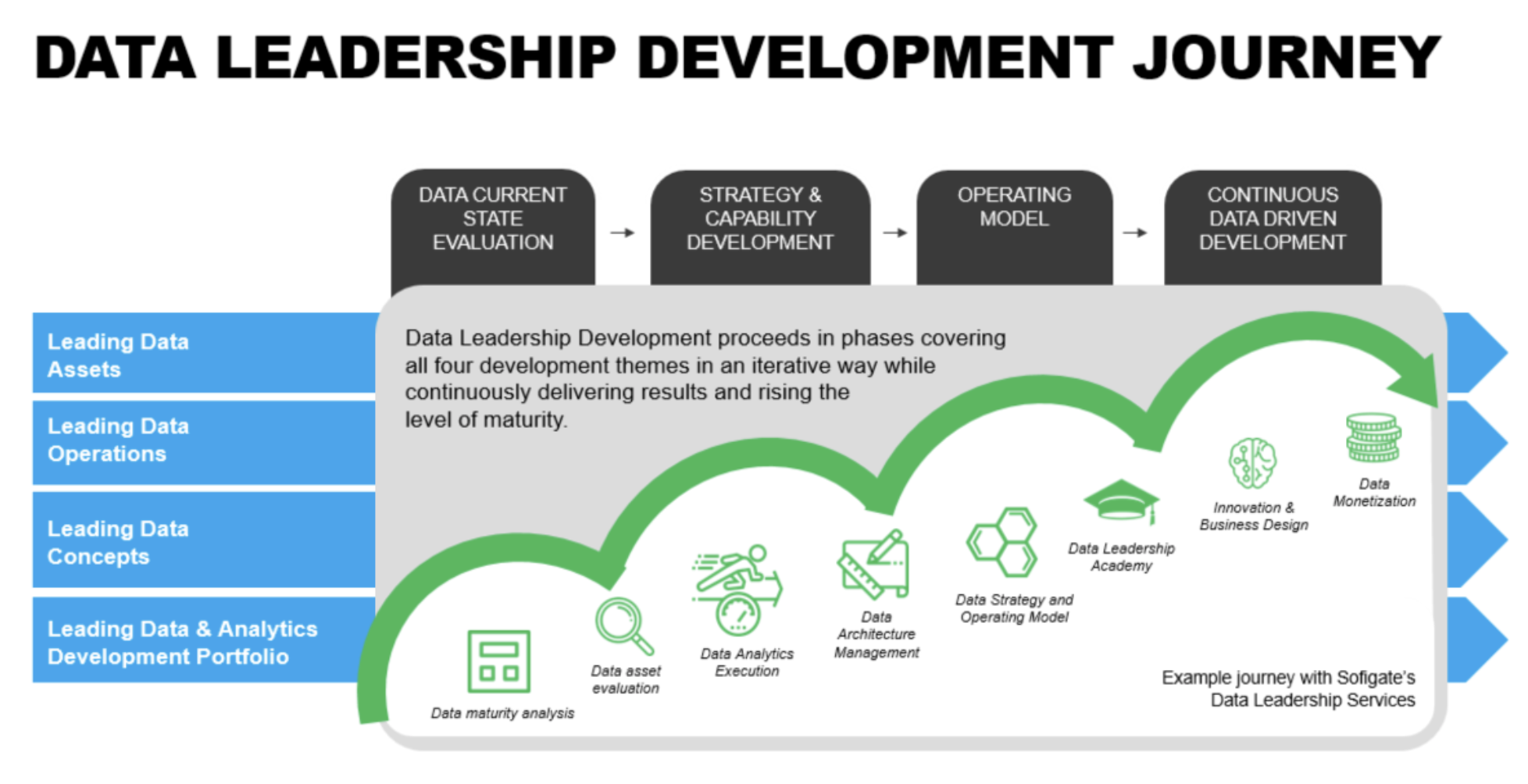Data Streams to Leadership
Many companies are busy investing in data & analytics (D&A) capabilities. As with any investment in new business capabilities, chances are that some kind of hype-curve is followed: there will be islands of success, some projects dragging-on without proper results, or some investments with no other return than “lessons learned”.
To succeed with data & analytics – and gain data leadership status – you need to keep a suitable balance between activities focused on experimentation and learning through proof of concepts and trials, and activities aiming to build the right organizational, service, and technology structures for the long run to gain economy of scale and avoid fragmentation.
Pursuing the following four data development streams will help to keep the right balance. This is of course assuming that your organization has already formulated a clear vision of what data leadership means and has the full commitment from senior management. If that is not the case, it is high time to create awareness at the C-level and develop a sense of urgency!
The four data development streams are equally important and should be pursued in parallel.

Leading Data Assets
In this development stream flow all activities related to developing and acquiring your data assets, technologies, competences, and right partners.
Typical development activities focus on creating data catalogues, improving data quality, building data-lakes, and selecting and developing the right data-architecture with selected technology and partners.
Leading Data Operations
It is important to have a blueprint in place on how to operate your D&A activities. This can be for example in a center-of-excellence format or in shared-service fashion. The operating model describes how to get from data & analytics business demand to a standing D&A service.
Your operating model should define the roles, services processes, and methods to help you create common ways of working across the organization and so to avoid working in silos. The best operating model is scalable: you can start by staffing the key positions and then recruit, develop and source more as you proceed and gain a better understand of the required competences.
Leading Data Concepts
Compelling use-cases are an obvious way to drive development and to help you justify the investments in D&A capabilities. Celebrating success and communicating this across the organization also helps to develop the right culture and discover new opportunities.
Capturing the demand is a two-way street of demonstrating technical possibilities with ideas from the field. A solid innovation and concept development process is required.
When developing these concepts, you should consider whether the data itself could be monetized – though this is not always easy.
Leading the D&A Development Portfolio
There will be several departments in the company exploring D&A capabilities; from marketing and R&D to aftersales with IoT initiatives. Governing these activities through a single development portfolio helps to avoid reinventing wheels and makes it easier to build a holistic view. The portfolio steering should also maintain a good balance between nurturing experimentation where needed and killing off underperforming activities and relocating scarce resources to more promising projects.
Ideally the portfolio steering should also have a dedicated budget.
To ensure these development streams flow in the right direction, a clear vision and management-level commitment is a pre-requisite. The ultimate objective is to create the right Data Leadership culture and mindset in the organization and so to turn data into business value.
About the author:
Menno Huijben is a Senior Executive at Sofigate and a concept owner of Business Technology Transformations and Data Leadership.
Menno is interested in the realm of decision-making in business, especially where data-driven meets intuition and experience. His motto is ” Don’t forget the Human Factor “


